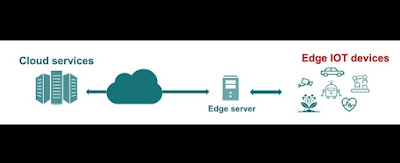There are many algorithms for reinforcement learning, please see https://en.wikipedia.org/wiki/Reinforcement_learning
Well-known algorithm is Q-learning.
Reinforcement learning involves an agent, a set of states  , and a set
, and a set  of actions per state. By performing an action
of actions per state. By performing an action  , the agent transitions from state to state. Executing an action in a specific state provides the agent with a reward (a numerical score).
, the agent transitions from state to state. Executing an action in a specific state provides the agent with a reward (a numerical score).
Algorithm
After  steps into the future the agent will decide some next step. The weight for this step is calculated as
steps into the future the agent will decide some next step. The weight for this step is calculated as  , where
, where  (the discount factor) is a number between 0 and 1 (
(the discount factor) is a number between 0 and 1 ( ) and has the effect of valuing rewards received earlier higher than those received later (reflecting the value of a "good start").
) and has the effect of valuing rewards received earlier higher than those received later (reflecting the value of a "good start").  may also be interpreted as the probability to succeed (or survive) at every step
may also be interpreted as the probability to succeed (or survive) at every step  .
.
The algorithm, therefore, has a function that calculates the quality of a state–action combination:
 .
.
Before learning begins,  is initialized to a possibly arbitrary fixed value (chosen by the programmer). Then, at each time
is initialized to a possibly arbitrary fixed value (chosen by the programmer). Then, at each time  the agent selects an action
the agent selects an action  , observes a reward
, observes a reward  , enters a new state
, enters a new state  (that may depend on both the previous state
(that may depend on both the previous state  and the selected action), and
and the selected action), and  is updated. The core of the algorithm is a Bellman equation as a simple value iteration update, using the weighted average of the current value and the new information.
is updated. The core of the algorithm is a Bellman equation as a simple value iteration update, using the weighted average of the current value and the new information.
Cf. https://en.wikipedia.org/wiki/Q-learning#Deep_Q-learning
























